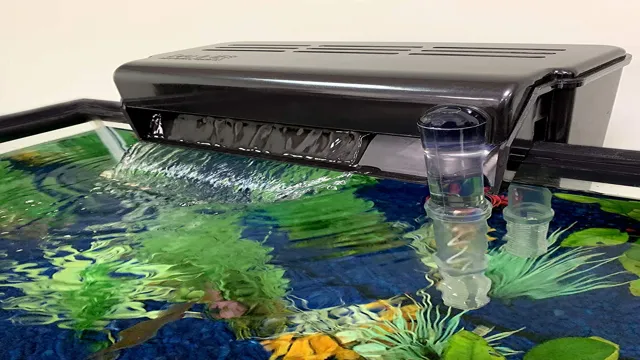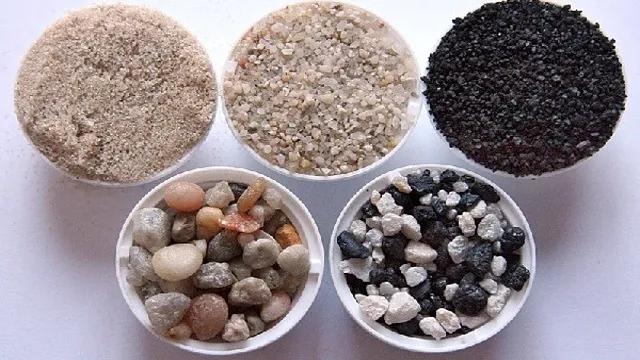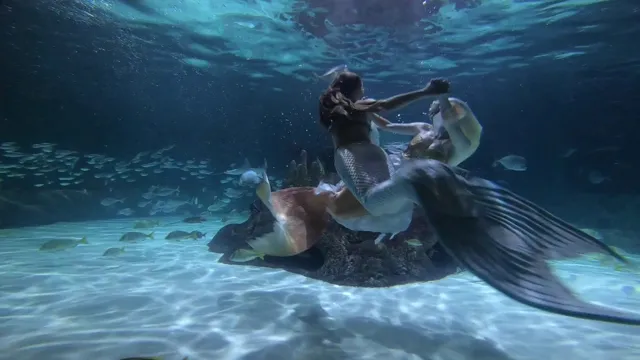How to Make an Ecosystem Aquarium: A Step-by-Step Guide for Beginners
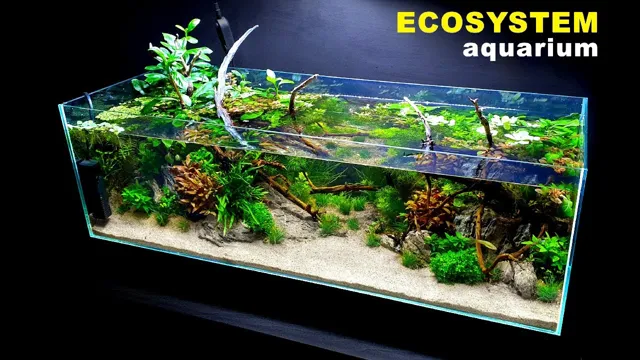
Are you an aquarium enthusiast looking to step up your game and create an ecosystem aquarium? Look no further! In this blog post, we will take you through a step-by-step guide on how to make an ecosystem aquarium. An ecosystem aquarium differs from a regular aquarium in that it creates a natural environment for aquatic plants and animals to thrive. The balance between living organisms and the environment is essential for the ecosystem to function correctly.
Making an ecosystem aquarium involves careful planning and consideration before setting up the tank. You need to decide the types of plants and animals you want to include, the water and lighting requirements, and the appropriate filtration system. We will walk you through all the necessary steps, including choosing the right plants and animals, setting up the tank, and maintaining the ecosystem’s balance.
Creating an ecosystem aquarium is not only a beautiful addition to your home, but it is also a fascinating project that can teach you about the intricate balance of nature. So why not give it a try and create your ecosystem aquarium? We guarantee you’ll be amazed by the results.
Introduction
If you’re interested in creating a unique and self-sustaining environment in your aquarium, an ecosystem aquarium might just be the way to go. These types of aquariums replicate the natural balance of living organisms found in a particular ecosystem, creating a healthy and dynamic environment for aquatic creatures to thrive in. To get started, you’ll first need to choose the type of ecosystem you want to recreate, such as a coral reef or mangrove forest.
Then, you’ll need to carefully select the appropriate plants, animals, and microorganisms to create a well-balanced system. It’s important to note that maintaining an ecosystem aquarium requires careful monitoring of water quality and pH levels, as well as ensuring that each organism is getting the proper food and nutrients they need to survive. But with proper care and attention, a beautifully diverse and thriving ecosystem aquarium can be a stunning addition to any home or office.
What is an Ecosystem Aquarium?
An ecosystem aquarium is a unique type of aquarium that strives to create a balanced ecosystem to showcase the natural environment that fish and plants come from. Rather than simply replicating a habitat, an ecosystem aquarium goes a step further by attempting to replicate the natural cycle of life and death that occurs in nature. This means creating an environment where plants produce oxygen and food for herbivorous fish, which in turn produce waste that fertilizes the plants, and where predatory fish prey on the weaker fish to keep populations in check.
The goal is to create a self-sustaining ecosystem that requires minimal maintenance and allows for a natural and beautiful display of aquatic life. If you’re interested in creating an ecosystem aquarium, it’s important to understand the key components of this type of setup and how they work together to create a thriving environment for your fish.
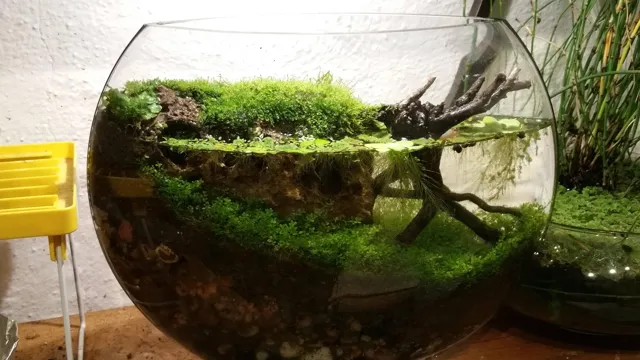
Benefits of Having an Ecosystem Aquarium
When it comes to aquariums, many people believe that all they need to do is fill the tank with water, add a few decorations, and throw some fish in. However, there’s so much more to this hobby that not only benefits the fish but can create a stunning display that enhances your home’s aesthetic appeal. That’s where an ecosystem aquarium comes in.
This type of aquarium mimics a natural aquatic environment, creating a self-sustaining system with the ability to provide many benefits. From improving the water quality to creating a relaxing and beautiful atmosphere, investing in an ecosystem aquarium can take your aquarium experience to the next level. With that said, let’s explore the amazing benefits of having an ecosystem aquarium in your home or office.
The main keyword in this paragraph is “ecosystem aquarium.”
Setting Up Your Ecosystem Aquarium
Making an ecosystem aquarium can be a fun and rewarding project for those who love aquatic life. To set up your ecosystem aquarium, first consider the type of environment you want to create and select the appropriate plants and animals to inhabit it. You’ll need a suitable aquarium tank, gravel or sand for the bottom, and a filter to keep the water clean.
Once you’ve selected your flora and fauna, you’ll need to arrange them in a way that creates a natural and balanced ecosystem. Proper lighting and temperature control are also important factors to consider. The diversity and interdependence of the creatures in your ecosystem aquarium will contribute to the health and vibrancy of the environment.
With careful attention to detail and a willingness to learn, anyone can create a thriving ecosystem aquarium that provides beauty and fascination for years to come. So, let’s start making your dream ecosystem aquarium today!
Choosing the Right Tank Size and Shape
Setting up an ecosystem aquarium can be a rewarding experience for any fish enthusiast. One critical step in this process is choosing the right tank size and shape. When selecting a tank, it is essential to consider the type and number of fish, plants, and other organisms you want to include.
The general rule is to have one gallon of water for every inch of fish. However, this measurement can vary depending on the fish’s needs and behavior. A larger tank is always better as it provides more room for the inhabitants to swim and grow.
The shape of the tank is also important as it affects the water’s flow and circulation, which is crucial for maintaining a healthy ecosystem. As an example, a long and narrow tank is ideal for fish that enjoy swimming, such as tetras, while a tall and narrow tank would suit species such as angelfish, which enjoy vertical swimming. Ultimately, the tank size and shape you choose will depend on your preferences and the species you want to keep.
Selecting the Right Plants and Animals
When setting up an ecosystem aquarium, it’s important to choose the right combination of plants and animals to ensure that the ecosystem thrives. The selection of plants and animals will depend on several factors, including the size of the aquarium, the water temperature and pH level, and the amount of light that the tank will receive. Some popular plants for ecosystem aquariums include java moss, anubias, and dwarf hairgrass, while common animals include shrimp, snails, and small fish like guppies or neon tetras.
Keep in mind that each species will have specific requirements in terms of water quality and quantity, so it’s essential to do your research before making any purchases. By selecting the right plants and animals for your ecosystem aquarium, you’ll be creating a sustainable and manageable environment that will be a joy to watch and care for.
Creating a Balanced Environment for Your Ecosystem Aquarium
When creating an ecosystem aquarium, it’s essential to consider various factors to ensure a balanced environment that allows all living creatures to thrive. The first step is to choose a suitable aquarium size and shape that caters to the specific needs of the organisms you intend to keep. Next, determine the kind of substrate to use, such as sand or gravel, which not only provides a natural environment but also helps with biological filtration.
Before adding any aquatic plants or animals, it’s advisable to cycle the tank to establish beneficial bacteria that aids in breaking down waste products. Once the tank is ready, you can add plants and animals that complement each other, such as herbivores and carnivores. It’s important to maintain regular water changes, test water parameters, and ensure adequate lighting to support photosynthesis.
Lastly, monitor the tank’s environment regularly, and make necessary adjustments to maintain a healthy and flourishing ecosystem. By following these simple steps, you can create and maintain a balanced environment that supports all living organisms in your ecosystem aquarium.
Cycling Your Aquarium to Create a Healthy Environment
Setting up your ecosystem aquarium for cycling is one of the most crucial steps in creating a healthy environment for your aquatic pets. First, you need to consider the type of aquarium that you want. Some popular choices include freshwater or saltwater aquariums.
Once you have your aquarium, you will want to add substrate and filter media to support beneficial bacteria growth. The beneficial bacteria help to break down and remove toxins, such as ammonia and nitrites. Next, add aquatic plants to help to remove excess nutrients from the water.
Finally, you will want to introduce aquatic pets slowly to the tank. Cycling your aquarium can take anywhere from a few weeks to a few months, but it’s essential to be patient for a thriving ecosystem. By setting up your aquarium correctly and allowing it to cycle, you can create a beautiful and healthy environment for your aquatic friends to thrive.
Maintaining Your Ecosystem Aquarium
If you’re looking to create an ecosystem aquarium, it’s important to know how to maintain it properly to ensure the health of your aquatic inhabitants and plants. The first step is to establish a balance of microorganisms, plants, and animals. This balance will help regulate the levels of nitrogen and oxygen in your aquarium, creating a self-sustaining ecosystem.
Next, resist the urge to clean too much. While it’s important to maintain cleanliness, you don’t want to disrupt the natural balance of the ecosystem. Monitor water pH levels, make sure your lighting is appropriate for your plants, and keep a close eye on the behavior of your fish.
Consider adding snails or shrimp to help keep algae at bay. Remember, a healthy ecosystem aquarium requires patience and careful observation, but the payoff is a beautiful and self-sustaining aquatic world for your enjoyment.
Managing pH Levels and Water Quality
Maintaining an ecosystem aquarium can be a rewarding experience, but it requires diligent attention to detail, particularly when managing water quality and pH levels. One critical aspect of maintaining your aquarium is monitoring pH levels, as various species of plants and animals thrive in specific pH ranges. To keep your aquarium functioning correctly, begin by testing the pH regularly and making adjustments as necessary.
Filtration is also crucial for maintaining proper water quality, as it removes waste and harmful substances that can affect the overall health of your plants and animals. Regularly cleaning your aquarium and removing debris will also help maintain a healthy environment. By consistently monitoring your ecosystem aquarium’s pH levels and water quality, you can ensure a thriving ecosystem full of vibrant and healthy flora and fauna.
Feeding Your Aquarium Inhabitants
When it comes to maintaining your ecosystem aquarium, one of the most important aspects is feeding your aquarium inhabitants. Choosing the right kind of food for your fish and other aquatic animals is key to ensuring they stay healthy and happy. You’ll want to consider the species of fish you have in your tank and their dietary needs, as well as the type and amount of food you’re giving them.
Overfeeding can lead to a buildup of harmful waste in your tank, while underfeeding can lead to malnutrition and other health problems. Finding the right balance can take some trial and error, but always err on the side of caution and monitor your aquarium conditions regularly. Remember, a healthy ecosystem goes beyond just feeding your fish, it also involves maintaining proper water parameters and providing adequate filtration and lighting.
So, make sure you’re taking a holistic approach to your aquarium maintenance and keeping your little underwater world thriving.
Cleaning and Regular Maintenance
Maintaining an ecosystem aquarium requires regular cleaning and maintenance to keep the fish and plants living in harmony. One important task is to clean the filter regularly, as it plays a crucial role in maintaining the water quality and clarity. Over time, debris will accumulate in the filter sponge or cartridges, which can reduce its efficiency and even become a breeding ground for harmful bacteria.
Cleaning the filter once a month by removing the sponge or cartridges and rinsing them in aquarium water is typically sufficient. Additionally, algae can also grow on the glass or decor in the tank, which can be removed using a specialized scraper or algae pad. Lastly, regular water changes are also important to remove excess nutrients and waste from the tank, preventing the buildup of harmful chemicals that can be toxic to the fish and plants.
By performing these routine maintenance tasks, your ecosystem aquarium will thrive and remain a healthy living ecosystem for its inhabitants.
Conclusion and Next Steps
Creating an ecosystem aquarium is more than just assembling a beautiful display of plants, fish, and other aquatic organisms. It’s like conducting a symphony, where every living creature plays a vital role in creating a harmonious and sustainable aquatic environment. To succeed in this endeavor, you need to be patient, diligent, and creative, and willing to learn from both successes and challenges.
So, if you’re up for the challenge, put on your conductor’s hat and get ready to make some beautiful music under the sea!”
FAQs
What is an ecosystem aquarium?
An ecosystem aquarium is a self-contained aquatic environment that mimics a natural ecosystem, with a balance of fish, plants, and microorganisms.
How do I set up an ecosystem aquarium?
To set up an ecosystem aquarium, you will need a tank, substrate, water, plants, fish, and a filtration system to maintain the balance of the ecosystem.
What kind of plants should I choose for my ecosystem aquarium?
You should choose plants that are suitable for your fish, can thrive in your water conditions, and contribute to the overall health of the ecosystem. Some popular choices include Java moss, Amazon sword, and water wisteria.
Can I add other animals like snails or shrimp to my ecosystem aquarium?
Yes, you can add other animals like snails or shrimp to your ecosystem aquarium, as long as they are compatible with your fish and do not disrupt the balance of the ecosystem.
How do I maintain the ecosystem in my aquarium?
To maintain the ecosystem in your aquarium, you will need to regularly monitor water parameters, perform water changes, and adjust the lighting and filtration systems as needed.
What benefits does having an ecosystem aquarium provide?
An ecosystem aquarium can provide a beautiful and peaceful display, improve air quality, and have a calming effect on people.
Can I use tap water in my ecosystem aquarium?
You can use tap water in your ecosystem aquarium, but you will need to treat it and make sure it is safe for your fish and plants. Purifying chemicals, such as chlorine and chloramines, can be harmful to aquatic life.

